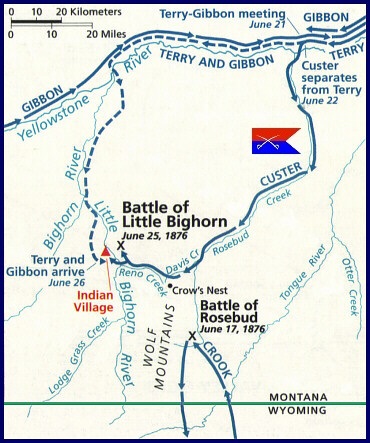
 |
| By the mid-1870s, the United States government and many of the Great Plains Indians faced a possible showdown. The Fort Laramie Treaty of 1868 had earlier designated the western half of southern Dakota Territory as the Great Sioux Reservation. Additionally, the treaty allowed the Sioux (and the Cheyenne) to roam freely between the Black Hills and the Bighorn Mountains. Six years later, the discovery of gold in the Hills created such acute interest in the region that serious intervention by prospectors and settlers was inevitable, although the government's effort to bar whites from the area was at best half-hearted. The solution from the frustrated Indians' point of view was to violate treaty lines and harass white traffic attempting to pass through or near Indian land. The government responded by increasing sanctions against the hostile Indians; hence, the infamous Centennial Campaign of 1876. |
 |
| The War Department generated a three-pronged campaign to control belligerent Sioux and Cheyenne forces concentrated in southeastern Montana under the leadership of Sitting Bull, Crazy Horse, and others. General George Crook approached from Fort Fetterman, Wyoming; Colonel John Gibbon advanced from Fort Ellis, Montana; and General Alfred Terry proceeded from Fort Abraham Lincoln, northern Dakota. Lieutenant Colonel George Armstrong Custer commanded the 7th Cavalry, part of Terry's column. |